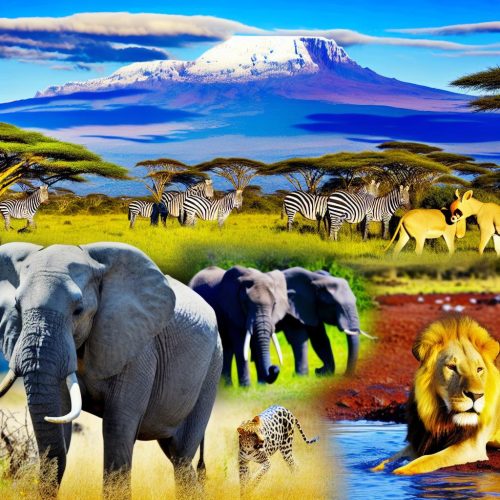Overview of Mount Kenya National Park
Mount Kenya National Park, nestled in central Kenya, is a prominent conservation area established in 1949. It is a focal point for both conservation efforts and tourism, drawing visitors from around the world due to its breathtaking landscapes and diverse ecosystems. Named after Mount Kenya, the second-highest peak in Africa, this park plays a pivotal role in Kenya’s ecological conservation and cultural identity. It shares its fame with the towering heights of Kilimanjaro, although each mountain offers unique experiences.
Geographic Features
The extensive terrain of Mount Kenya National Park covers approximately 715 square kilometers. It is a land of extremes, with its rugged, glacier-adorned summits and varied ecological zones. The altitude within the park ranges from about 2,400 meters in the lower vegetative zones to the lofty summit of Batian at 5,199 meters. This diverse range of altitudes supports a rich variety of habitats, fostering an incredible amount of biodiversity in plants and animals.
Flora and Fauna
The park is a sanctuary for an array of plant life, especially noted for the remarkable Afro-alpine moorland. This zone is characterized by its unique plants such as the giant lobelia and the towering senecio species, which are adaptations to the cold, high-altitude environment. The montane forests, located at lower elevations, provide a habitat for a diverse community of wildlife. Mighty elephants and robust buffaloes roam these forests, while primate species add to the diversity. Bird enthusiasts can spot over 130 bird species within the park, including the elusive Jackson’s Francolin and the swift Sparrowhawk.
Conservation Efforts
The ecological importance and wealth of biodiversity have earned Mount Kenya National Park a UNESCO World Heritage Site designation. Conservation actions are multifaceted to maintain the park’s natural beauty and biological wealth. Anti-poaching measures are actively enforced to protect the wildlife, while habitat restoration projects aim to revive areas affected by human activity or natural degradation. Additionally, research initiatives are ongoing to better understand and support the park’s ecosystems. These efforts are paramount to ensuring the long-term sustainability of the unique flora, fauna, and cultural heritage in the region.
Visitor Experience
For visitors, Mount Kenya National Park is a paradise of recreational and cultural exploration. The park offers numerous hiking trails, each unveiling spectacular vistas of the surrounding landscapes, providing both serene strolls for casual hikers and challenging routes for seasoned trekkers. Climbers are particularly drawn to the adventure of scaling Mount Kenya’s higher summits, with Nelion and Batian peaks offering demanding climbs that reward with unparalleled views. Beyond physical pursuits, the park also invites visitors to delve into the cultural tapestry of the area by exploring nearby towns. These local visits afford insights into the traditions, daily lives, and rich heritage of the indigenous Kikuyu people, who consider Mount Kenya a sacred site.
In conclusion, Mount Kenya National Park is more than just a natural wonder; it is a vital ecological and cultural sanctuary. It offers diverse experiences, catering to nature lovers and thrill-seekers alike while playing an essential role in the conservation of our planet’s biodiversity. The park’s preservation is crucial for maintaining the ecological balance and guarding the cultural legacy that is deeply ingrained within this remarkable landscape.
